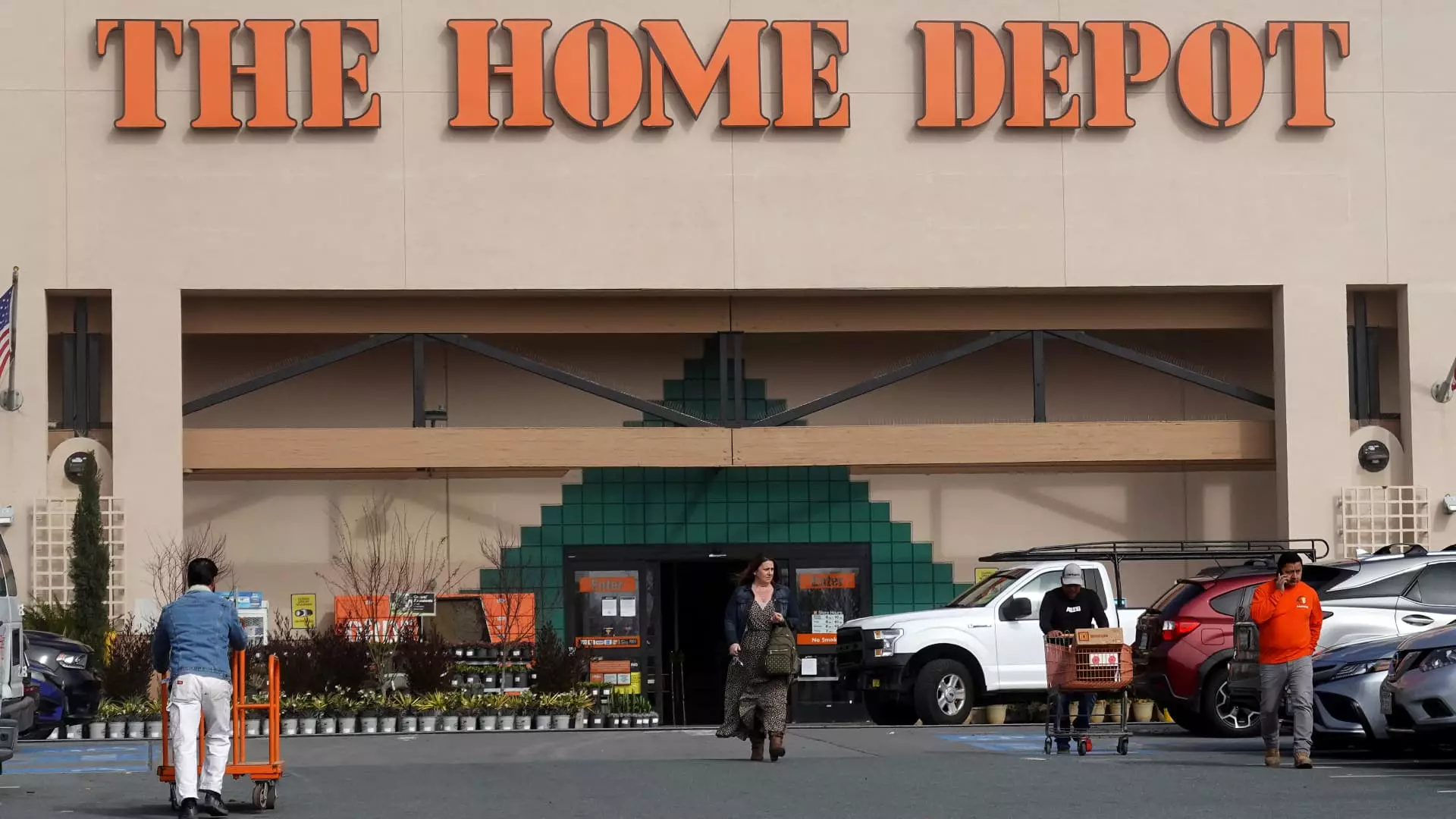As the calendar flips to late spring, the retail world turns its attention to a unique segment that thrives on seasonal demand: home improvement. For juggernauts like Home Depot, this period is akin to a gold rush, a critical time packed with sales opportunities. Jim Cramer, an influential voice in investment commentary, describes this juncture as “Christmas” for home improvement retailers, underscoring the potential for significant revenue generation. It’s a make-or-break situation that can establish or strain a retailer’s financial health for the year ahead.
Home Depot’s timing for its Memorial Day outdoor sales event is not merely coincidental; it’s strategic, crafted to maximize foot traffic and capture consumer interest right as outdoor activities surge. With discount rates that appeal to the gardening fanatic and the casual DIY-er, we’re witnessing the company’s effort to draw in clients with a blend of urgency and temptation. However, it’s essential to recognize that come June, the idyllic sales momentum could be thwarted by external factors that dampen consumer exuberance.
Sales Numbers Tell a Complicated Story
Diving into Home Depot’s financial performance reveals a complex picture. While sales figures from fiscal year 2024 indicate a marginal increase in garden-related purchases—$20.83 billion representing a 1.29% ascent from the previous year—it’s clear that this growth has been sluggish, especially when compared to the broader retail landscape. This segment now accounts for approximately 13% of Home Depot’s total sales. Surprisingly, other categories, such as lumber and paint, contribute a smaller slice of the pie at 7.7% and 7%, respectively.
The challenges that lie ahead in the second quarter, traditionally the retailer’s most lucrative period, are undeniable. Estimates point to a 5.3% revenue growth year-over-year, an increase to approximately $45.48 billion. Yet, looming uncertainties—primarily from adverse weather patterns and fine-tuned consumer sentiment—cast shadows over these optimistic projections. Investors face a high-stakes waiting game for the first-quarter earnings report, which will wield considerable influence on market sentiment surrounding Home Depot. An 8% revenue increase is predicted, but the anticipated earnings per share of $3.59 reflects a consistent decline, highlighting the concerns brewing beneath the surface.
The Housing Market: An Albatross Around Home Depot’s Neck
At the core of Home Depot’s revenue trajectory is the real estate market, and current indicators suggest trouble waves. With mortgage rates lingering around 7%, a shift towards favorable borrowing conditions seems distant. Even as buyer interest rebounds gently, driven by the dual factors of increased home loan demand and contractors gearing up for larger projects, the road to recovery feels tenuous at best. The longer these interest rates stagnate, the more Home Depot finds itself entangled in a cycle of uncertainty, hampering its ability to leverage seasonal demand effectively.
While some analysts show optimism—highlighted by survey findings that infer returning contractor confidence—the reality remains bleak. Jim Cramer’s assertion that mortgage rates need to dip below 6.5% to invigorate the housing market reflects a deeper concern: consumers in limbo struggling between desire and financial viability. Home Depot’s growth hinges not only on sales events like the Memorial Day promotions but also on favorable conditions in the housing market. With consumer behavior shaped by macroeconomic factors, the irony lies in the fact that the very push to stimulate spending may paradoxically prompt stagnation if the market doesn’t respond favorably.
Tariffs: The Unseen Hand Conditioning Home Depot’s Fate
Adding another layer to Home Depot’s conundrum is the ongoing battle against tariffs, a catastrophic planning variable for any retailer reliant on imported goods. Home Depot’s executives maintain a public demeanor of confidence amid these challenges, but the uncertainty created by trade policies inevitably casts a pall over future planning. While some believe that these headwinds might soon fade as tensions between the U.S. and China de-escalate, the specter of tariffs looms large—potentially curtailing incoming supplies and disrupting price structures.
The intricacies of corporate strategy, consumer behavior, and external market forces all collude to create an atmosphere of uncertainty. Analysts from UBS have suggested that the short-term risks created by tariffs might usher in a more robust recovery down the line, an assertion tinged with cautious optimism. Yet, what comes next for Home Depot remains anyone’s guess. Maintaining momentum amidst all this fluctuation will be critical, and the stakes couldn’t be higher in a fiercely competitive market.
In a world where the line between success and failure is drawn with the ink of economic conditions, Home Depot stands at a crossroads. Will it manage to navigate through these turbulent waters, or will it falter under the weight of unfriendly winds? The race against time continues, and how the retailer strategizes in the face of these adversities may ultimately determine its fate.

Leave a Reply